Storms and tornadoes hit the Midwest this past weekend, after a difficult year where flooding in Colorado left eight people dead. These are sharp reminders that storms are a powerful force. Here are 10 ways to plan ahead to minimize the risk and damage from rainstorms and flooding. 1. Make a Plan
Know how everyone will get to a safe place from your home, from daycare, from school, from work, or from anywhere members of the household typically spend time. At least once, practice how to evacuate -- who takes what, and where will you go? Remember to include family pets -- have food, carrier, bowl, leash, ID and other supplies ready. If it becomes necessary to evacuate, most shelters don't accept animals, so plan a safe place to take pets (with family, friends or a kennel out of the flood area). | 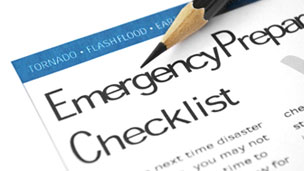
| 2. Keep in Touch
Members of the household might be away from home when a storm hits, so know how to contact each other. Post up-to-date emergency numbers at home, and make sure they're on file with daycare and school officials. If flooding and evacuation is a possibility, designate an out-of-state friend or relative as a contact person, because it can be easier to call long-distance than across town. Be sure household members with cell phones know how to send and receive text messages, because sometimes they get through when phone calls don't. | 
| 3. Get your Home Ready
Make sure any storm windows or shutters are ready to use, or have sheets of plywood on hand to install over the windows if gale force winds hit. Adding a backflow preventer on household drains stops contamination from floodwaters, and if the basement/crawlspace tends to get damp or flood, install sump pumps with back-up power.In areas with a high risk of flooding, the Centers for Disease Control recommends having a licensed electrician raise switches, sockets, circuit breakers and wiring at least 12" above projected flood levels. | 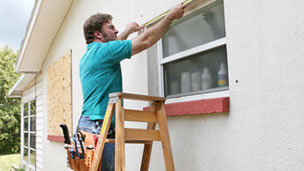
| 4. Play it Safe
The household should have at least one fire extinguisher, smoke detector and carbon monoxide detector, charged and ready to go. If the power goes out, don't plan on using candles, because of the high fire danger. Use flashlights as well as battery-powered lamps or lanterns, and have a good-sized supply of extra batteries. Also, never use a camp stove, propane lantern or portable barbecue grill inside without venting it to the outdoors, because the fumes are deadly. | 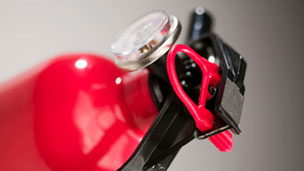
| 5. Hunt and Gather
Stock the pantry with several large containers of clean water and a three- to five-day supply of non-perishable food. Dried fruit, candy, crackers and canned food that doesn't require cooking are good choices, with a manual can opener. If there's a baby in the house, be sure to have a supply of baby food, formula, bottles and diapers. | 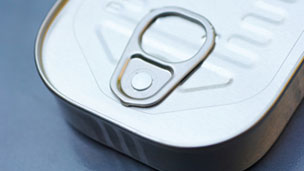
| 6. Prepare to Play Doctor
Have a first aid kit on hand, plus a week's supply of prescription medicines. Make sure local emergency responders are aware of household members with special medical needs. And because puncture wounds are a strong possibility during or after a flood, check that all household members' tetanus shots are up-to-date. | 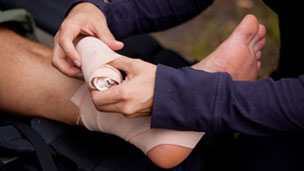
| 7. Keep Warm
Caulk and weatherstrip all doors and windows, and consider adding more insulation to the attic or walls. If there's a wood fireplace, have the chimney cleaned and lay in a supply of firewood. If the house is heated by propane or heating oil, make sure the fuel tank is full, in good shape and firmly secured. Know exactly where to find extra blankets or sleeping bags. | 
| 8. Stay Informed
Find out if your community warns the public about severe weather using a siren, or radio or television broadcasts. Have a battery-powered radio available to listen to emergency instructions if the power goes out. A "flood watch" or "flash flood watch" announcement means flooding or flash flooding (rapidly rising water along a stream or low-lying area) is possible; reports of a "flood warning" or "flash flooding warning" mean flooding or flash floods are already occurring or will occur soon. | 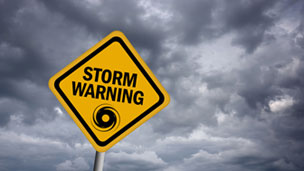
| 9. Be Ready to Leave
Fill the gas tanks of all vehicles, and make sure each one has flares, booster cables, maps, snacks and other emergency supplies. Know the location of the turn-off valves for the gas, electricity and water lines, and which family member is responsible for turning them off. Also be prepared to disconnect all appliances, to prevent electrical shock when the power is restored. | 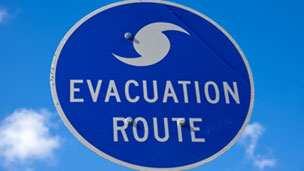
| 10. Proceed Carefully
If ordered to evacuate, take only essential items with you (like legal documents and insurance policies), and have them ready to grab and go. Follow designated evacuation routes, and expect heavy traffic. Just 6" deep of moving water can knock a person over, so only walk through still water and use a stick to check the firmness of the ground. Never drive into a flooded area; the road may be washed away, and there is no way to tell how deep the water is. | 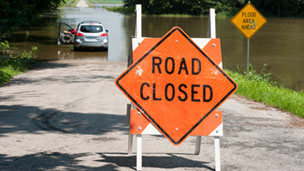 |
When winter rains threaten, it's easy to think "we'll be fine" -- but it's far better to take the steps that can make that statement true.
|